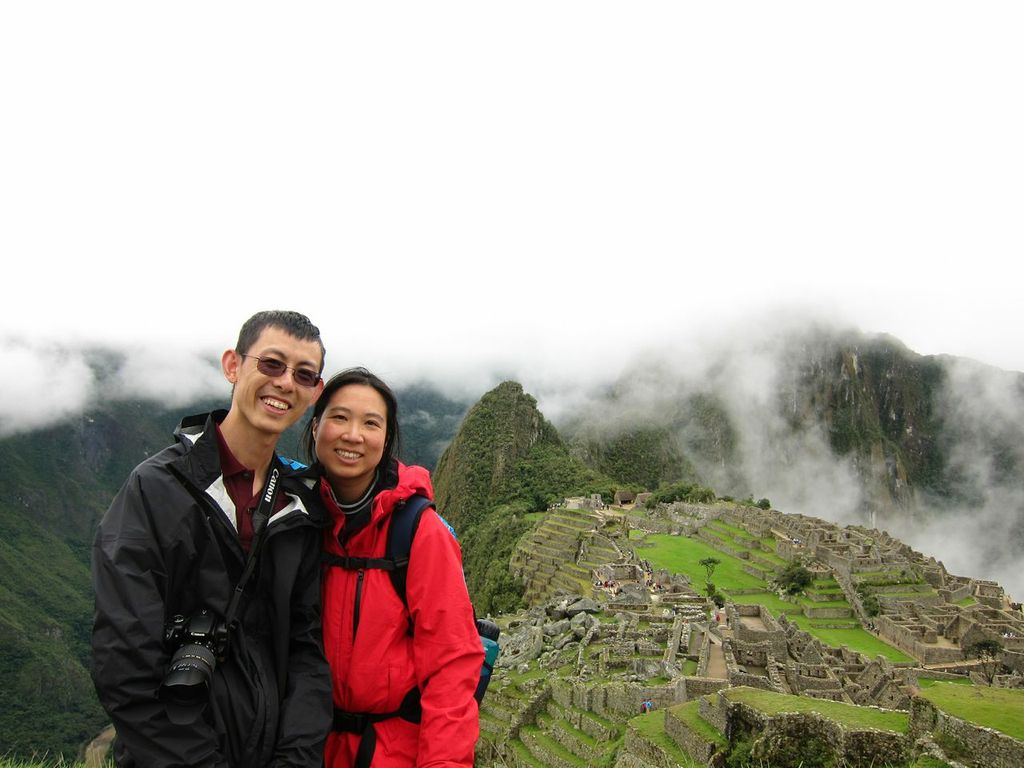The Inca Trail
A 4 day, 26 mile (43 km) trek to the Old Mountain, Machu Picchu
April 14, 2013 -- Before our 3:30 am wake up call, we already heard rain drops coming down, which only grew stronger, waking us up. Our reactions:
CL: Ugh... (as he pulled out his phone to record a voice memo... of the rain!?)
K: Uh oh... (nobody wants to get to Machu Picchu while it's raining - can't see anything!)
The porters this time are the ones who knocked on our tent. No time for morning tea either. We were the first ones in the breakfast tent (before the 4 am breakfast time) owing to our packing the night before. We had caramel pancakes (K's had a star on it, and C's had a regular zigzag), tea, and toast with jam. We also finally refilled our water bottle with boiled water, which was down to a few gulps since we had not replenished at all on the third day.
Everyone was pretty excited to finally see Machu Picchu. We headed off in the darkness, K with a headlight and C with an ultra bright mini-flashlight from Amazon, immediately after Carlos, who walked extremely quickly to the checkpoint. Well, walking quickly was one way to keep warm. His goal was that we be team #4 or #5. Only once has he ever been team #1. That probably wouldn't be worth the much earlier wake up time required.
Now we were glad that our camp was one of the furthest on day 3 because it meant that this morning walk in the dark to the checkpoint would be one of the shortest. The checkpoint actually did not open until 5:30 am, but groups liked to get there early to be the first through the gate and the first to see Machu Picchu from the Sun Gate (Init Punku). It's also so that the porters can get a head start and pack up everything in order to catch the first train back to Cusco to drop off stuff and then head home. Only the personal porters who carried our duffle bags would meet us in Aguas Calientes (meaning Hot Waters, because of its thermal springs), the town closest to the site, for lunch.
We were the 4th group to arrive, with the other Peru Treks group #5. While it was initially quite exciting to be #4 (out of about 18 groups), it soon got boring. We'd have to stand there for another hour and try to kill time. While waiting, we found out that another member of our group (not the same as the previous days') was not feeling well, had skipped breakfast, and had to sit down for the wait. (Ultimately our guide carried her pack for her on the remainder of the hike, which was really nice of him). K and CL felt pretty lucky that we did not succumb to stomach issues, especially given our love of food.
Soon, it began to rain, so we had to squish in under the roof by the check point. In order to maintain the peace about who got where first, our guide just agreed with the guide of group #3 that their group would go first.
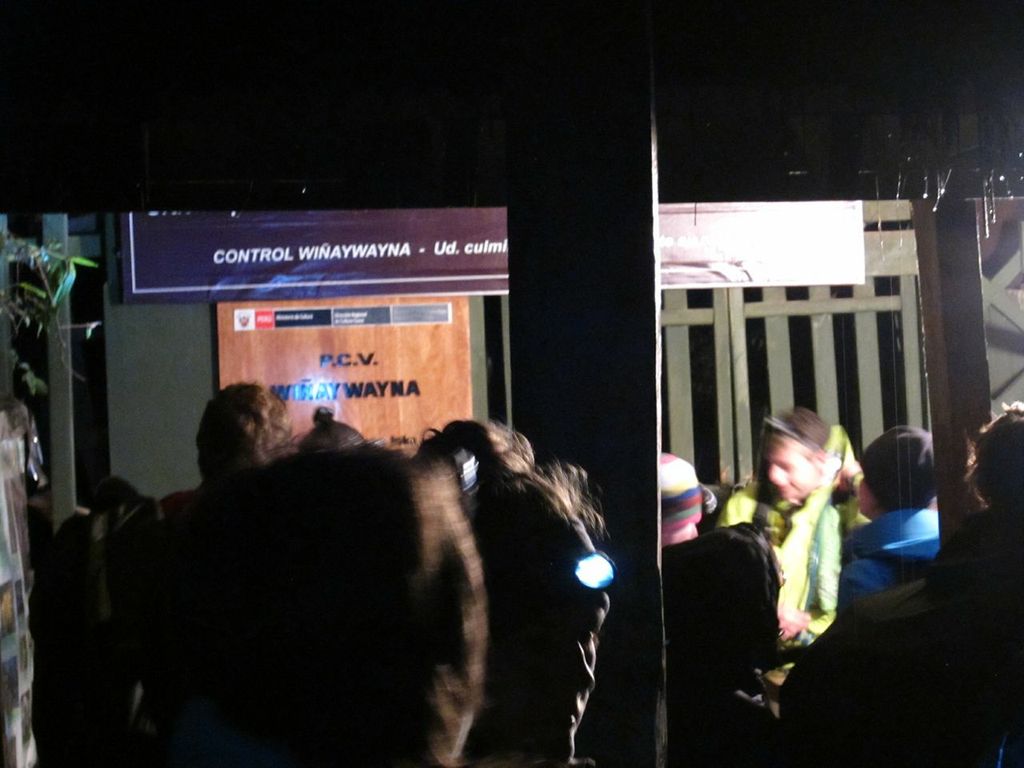
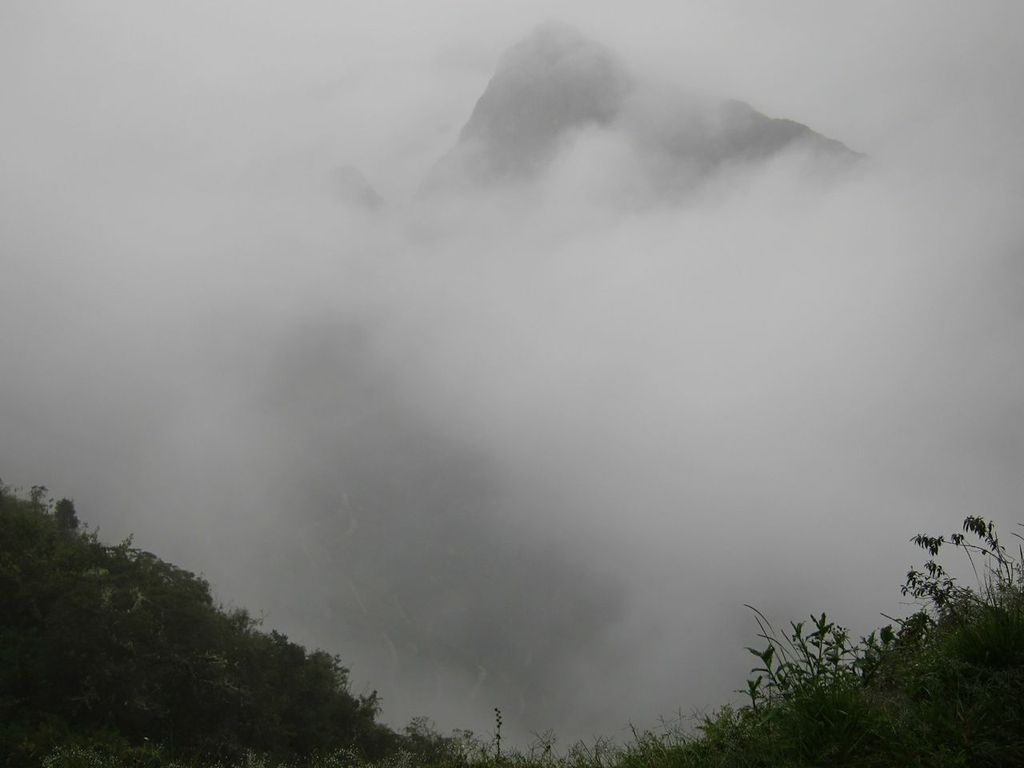
After the checkpoint, (where we saw a hummingbird!), we set off at a brisk pace for one hour to get to the Sun Gate. K and CL were #3 and #4 behind the guide, and we were practically dashing on all the flat parts and pausing only to carefully go up and down steps on the trail. It did not help that the rain just continued to come down. Nobody spoke since we were all just focused on going forward. When it got hot, we had to keep moving even as we removed hats and scarves. In fact, we were going so quickly (remember, this is fast for an already fast group), we ended up passing other groups that wanted a break. We probably arrived as group #2 at the Sun Gate.
Right before the Sun Gate were about 50 extremely steep stairs leading up to the gate (as a form of access control). At this point, K decided she was too wet and tired to care how stupid she looked, so she went and climbed up on all fours.
It was much faster than using the hiking pole alone! Alas, the view from the Sun Gate, in the pouring rain, was absolutely just clouds. Sun gate? More like Cloud gate!
When the wind blew a bit, we could see part of the Machu Picchu lower terraces... but that was about it. Normally this is where people take their first photos. All we could do was wait and hope that the clouds would clear. And wait. And wait.
The cloud and rain stayed firmly put.
So our entirely disappointed crew proceeded to descend 45 minutes to the actual site, following Janet.
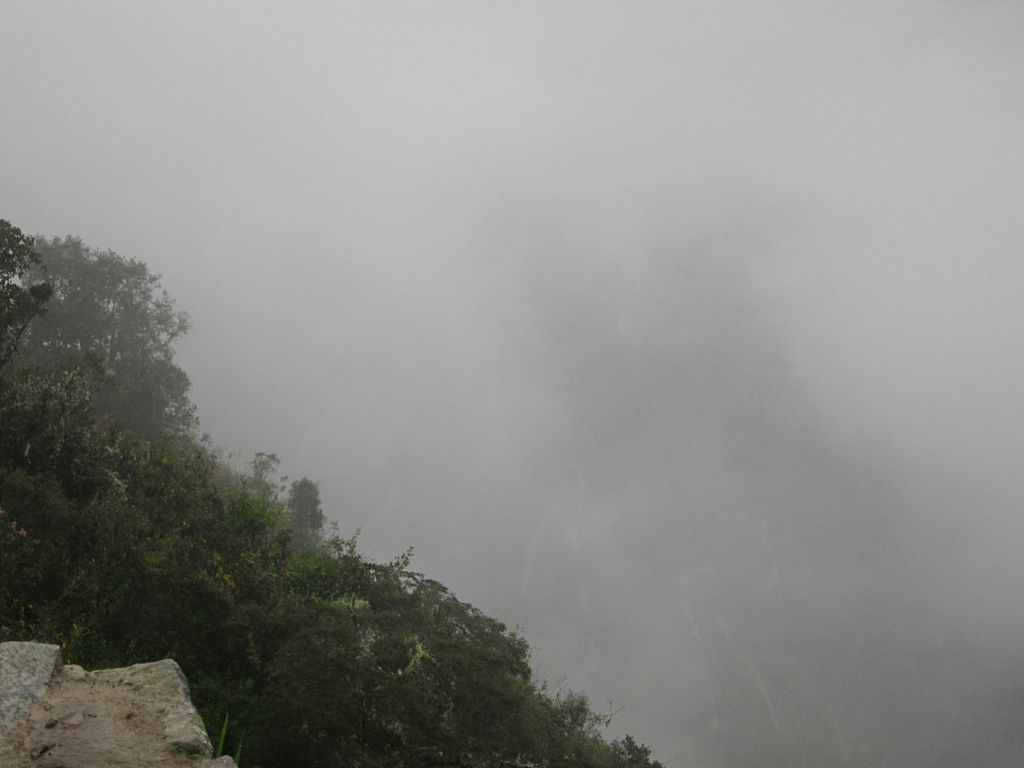
Fortunately, the pace of Janet's descent was not as quick as Carlos' trek from the checkpoint. We passed by people who had actually climbed up from Machu Picchu to go to the Sun Gate. They would be disappointed about the view too. Each step down was rather painful on our knees, even with the hiking pole. After the prior day's repeated descents, our knees really had taken a pounding. Now we feel like we know what it's like to be old and have achy body parts and to rely on a walking stick...
We passed by other buildings and structures, one of which may have been a cemetery for ordinary Quechuas in Incan times.

Because we were among the first ones there, we managed to grab a spot under a restaurant overhand to hide from the rain. Some folks got snacks and used the restroom. K ate an airplane brownie and CL ate airplane chocolate chip cookies. It was about 8 am, and about 4 hours since we had eaten breakfast, but lunch would not be until 1 pm. M&M's were S/.7 and a Twix was S/.11! Apparently the Pisco Sour there was the same price as Hot Chocolate. Probably nobody was ordering Pisco Sours though.
The restroom was the best deal (CL went but K was still being cheap and didn't go), since it was the same price as all the other toilets on the trail but it was a flushing modern toilet, with hand dryers too. As the rain grew stronger, we joked about getting our guided tour from under that spot. But our guide said we didn't fly all the way here, and hike for so long, just to sit under a restaurant roof and use our imagination. He insisted that we go out into the rain for the tour.
We paid S/. 3 to stash CL's large backpack, along with our hiking poles, since they were not allowed inside. However, we saw people with hiking poles so maybe it was more of a strong recommendation.
When we got to the terrace, the rain finally began to let up. At last, we could see how large Machu Picchu really was. And this was only one side of it!
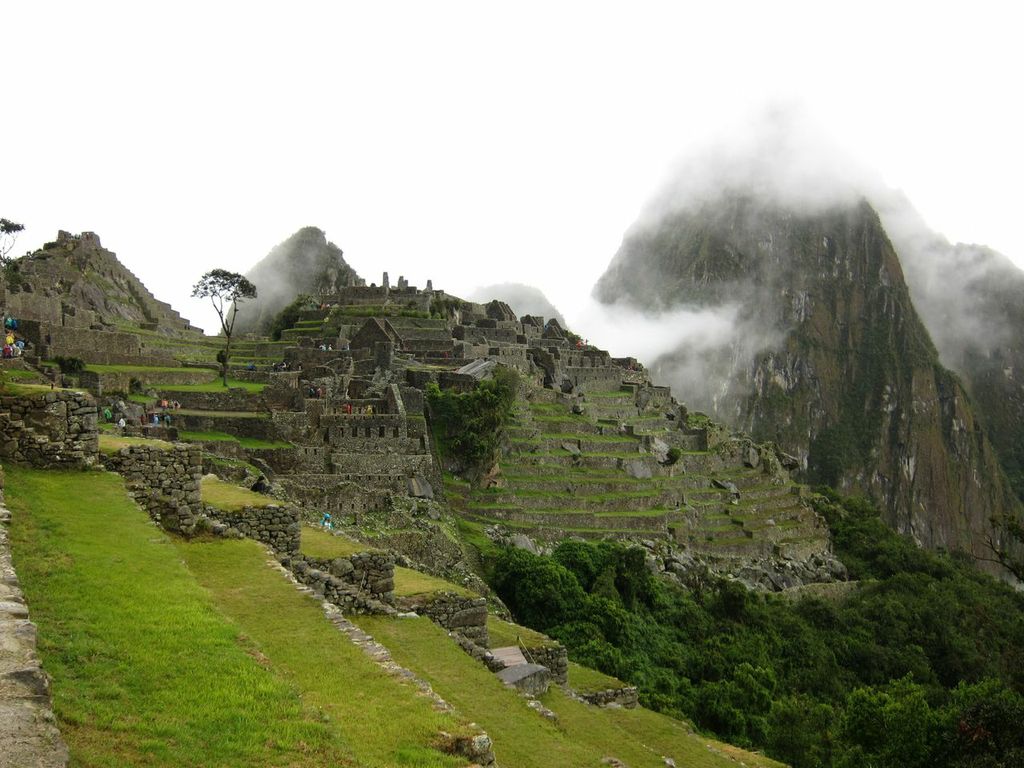
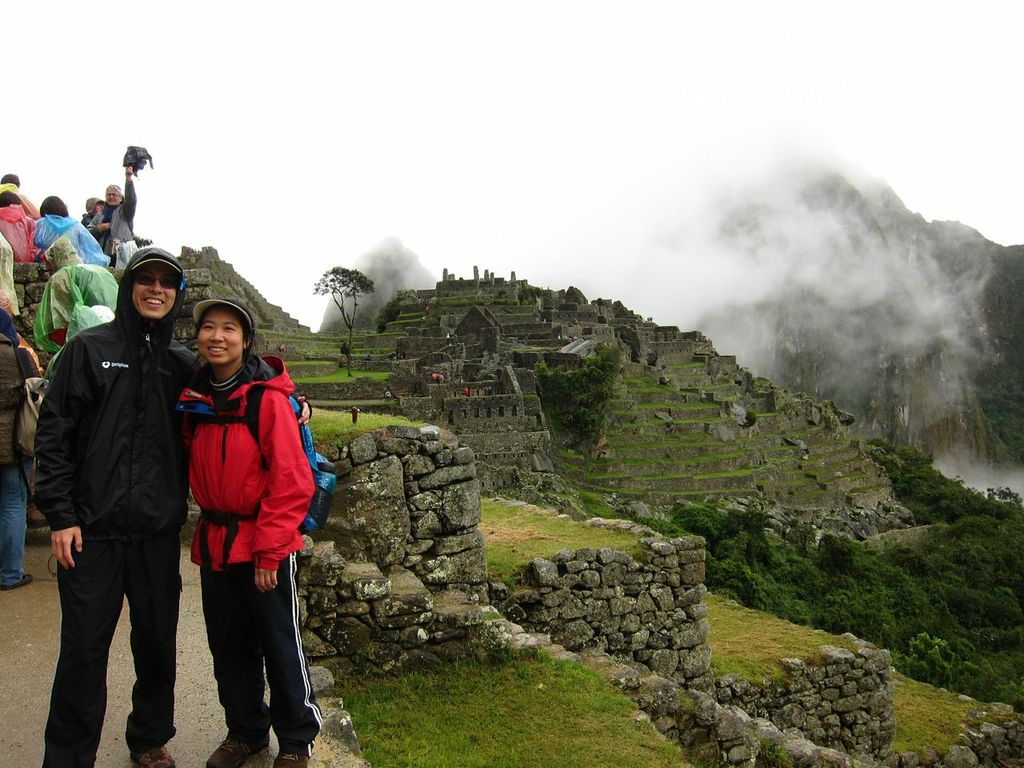
It probably could have housed 900 people (whereas previous structures we saw were perhaps for 10-100 people). Carlos explained how, based on the state of the local quarry and various large partially shaped stones, Machu Picchu was probably not completed at the time it was abandoned.
He also explained how the early investigators were mistaken in their theories (about Machu Picchu being a temple of virgins).
They initially thought the bones found were 75% female, but in fact, Quechuas are quite short people and so some of the short ones were male, not just female. It turned out that the bones were actually 50% female, 50% male.

We also visited the (reconstructed) thatched roof of a resting area where the upper class could sip holy water from the nicely constructed water fountain. The Incans had extremely good aqueduct systems, as well as earthquake resistant constructions. As a side note, we found it amusing and ironic that, in Cusco, later and supposedly more modern Spanish churches that were built on top of Incan holy sites collapsed during earthquakes, while the older Incan sites remained standing.
It turns out that the terraces were not simply carved out of the mountain. According to our guide, they consisted of careful layering of large rocks, small rocks, sand, black soil, and manure, in order to provide good drainage for the crops.
The rocks also are made of some material that absorbs heat during the day and releases it at night, to keep the crop beds warm for better yields. The terraces also protect against landslides.
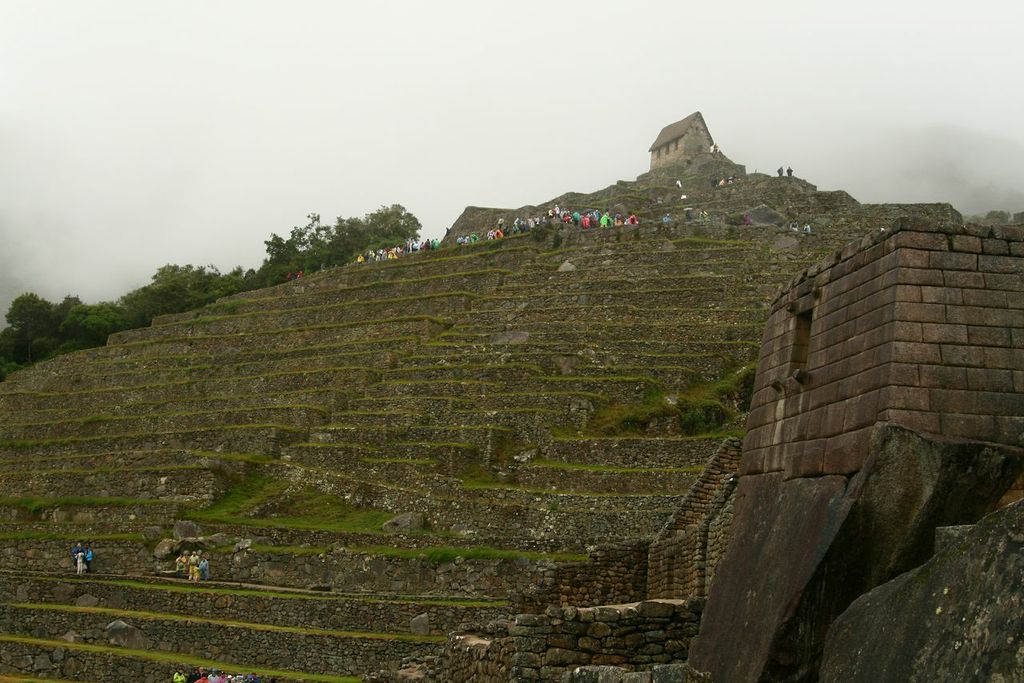
Then we visited the Temple of the Sun, the Temple of the Earth, and the Priest House.
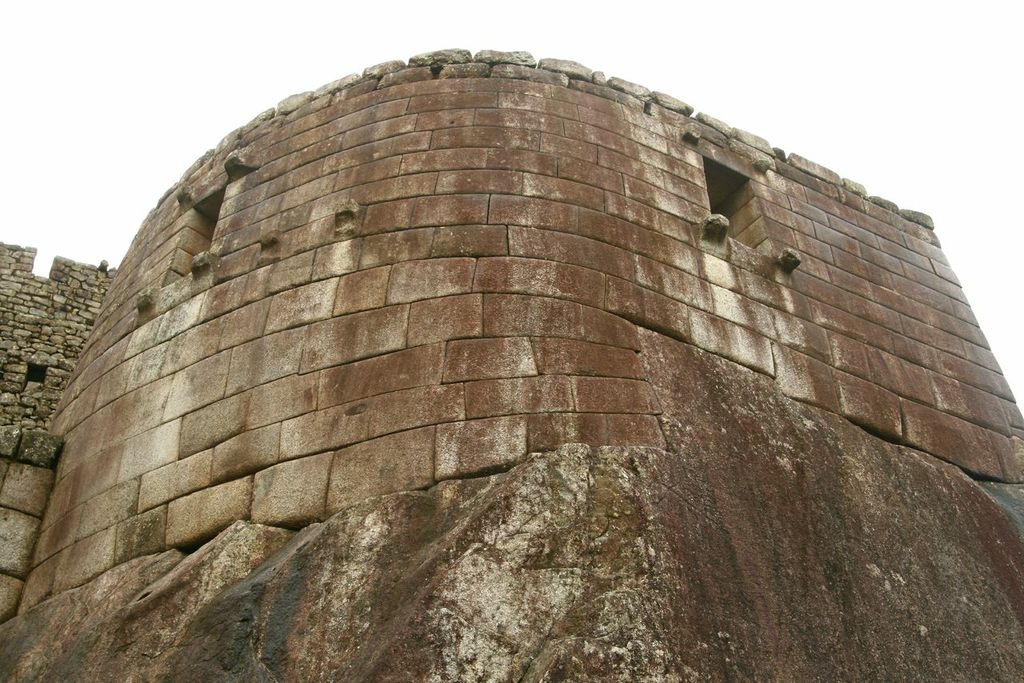
Not all Incan constructions were as precise as the ones done for temples, which were supposed to last for all eternity. Compare the two adjacent walls that served different purposes.

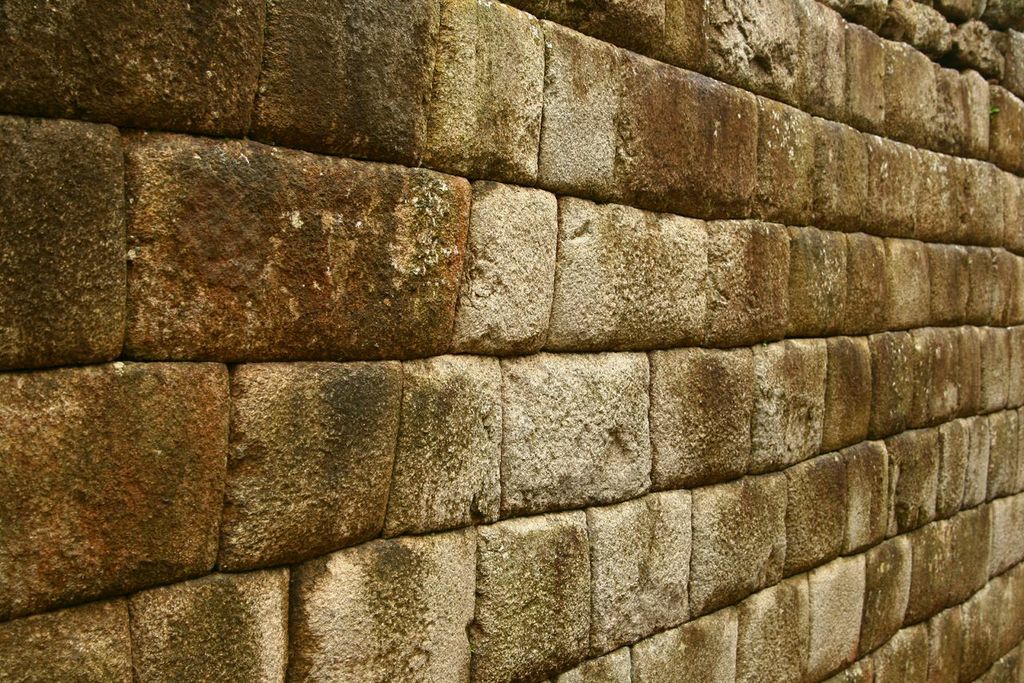

We had to also earn our bus tickets to Aguas Calientes by asking questions or making guesses to answer our guide's questions. While we two did not have any problems, a few of our group resorted to asking about the lichen and flowers because they couldn't think of anything to ask about. It was kind of funny. :)
Then we explored most of the rest of Machu Picchu by ourselves, including a place to clap hands to hear the echo, and including the Huayna Picchu entrance (another optional mountain climb).
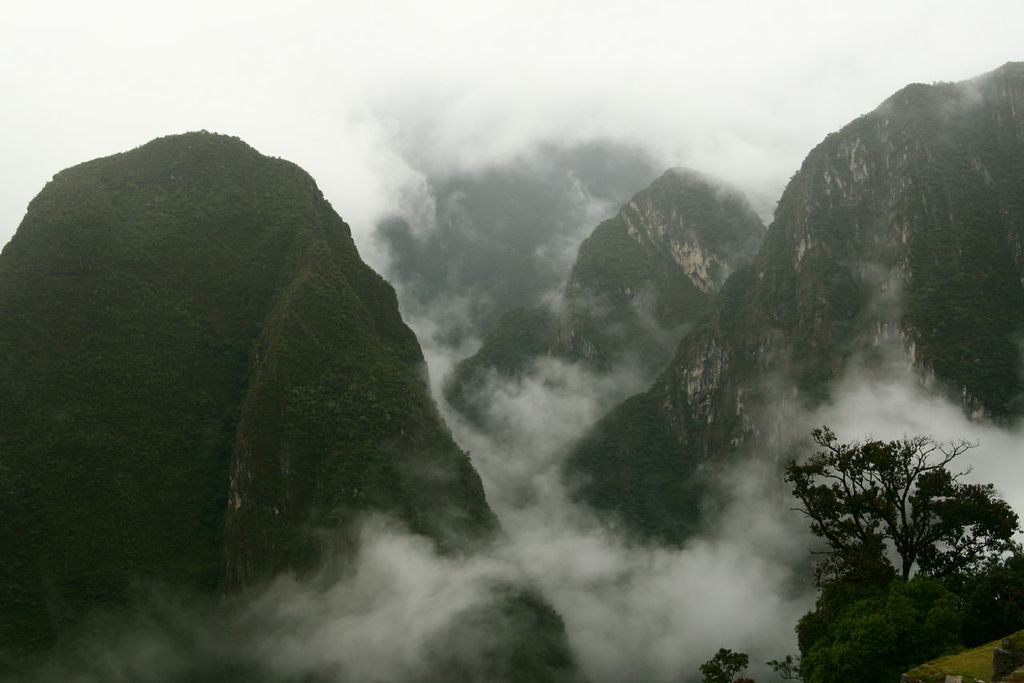
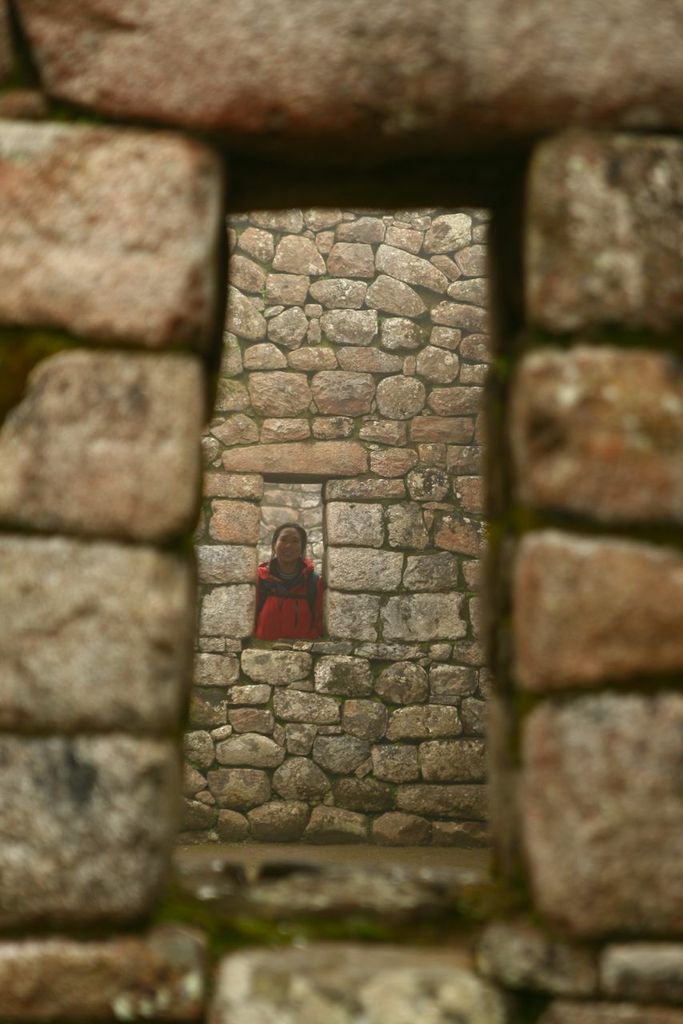
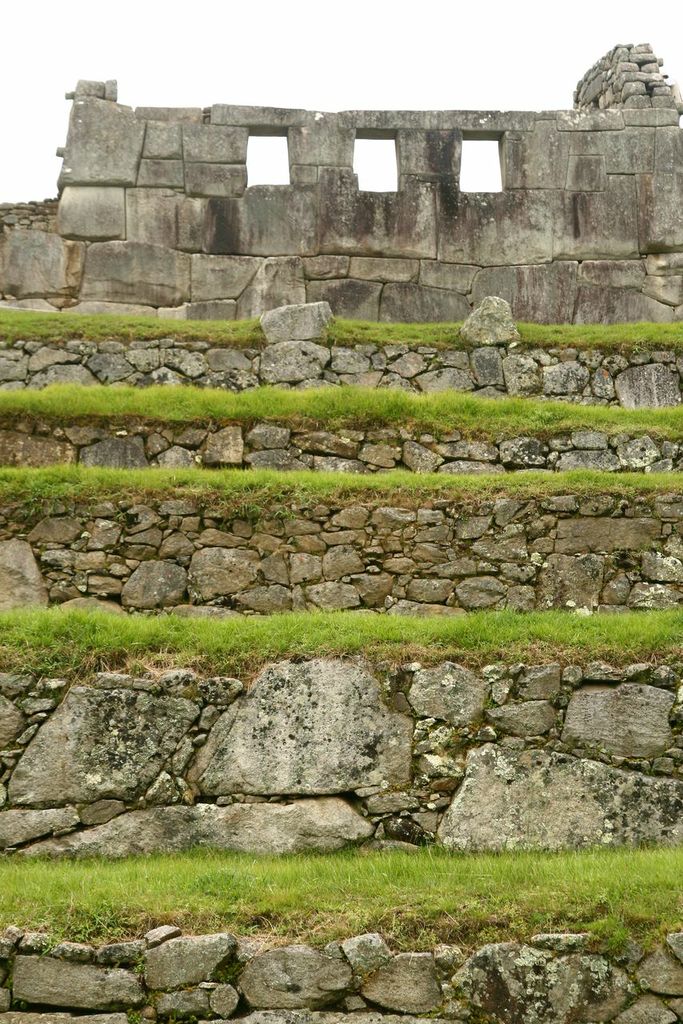
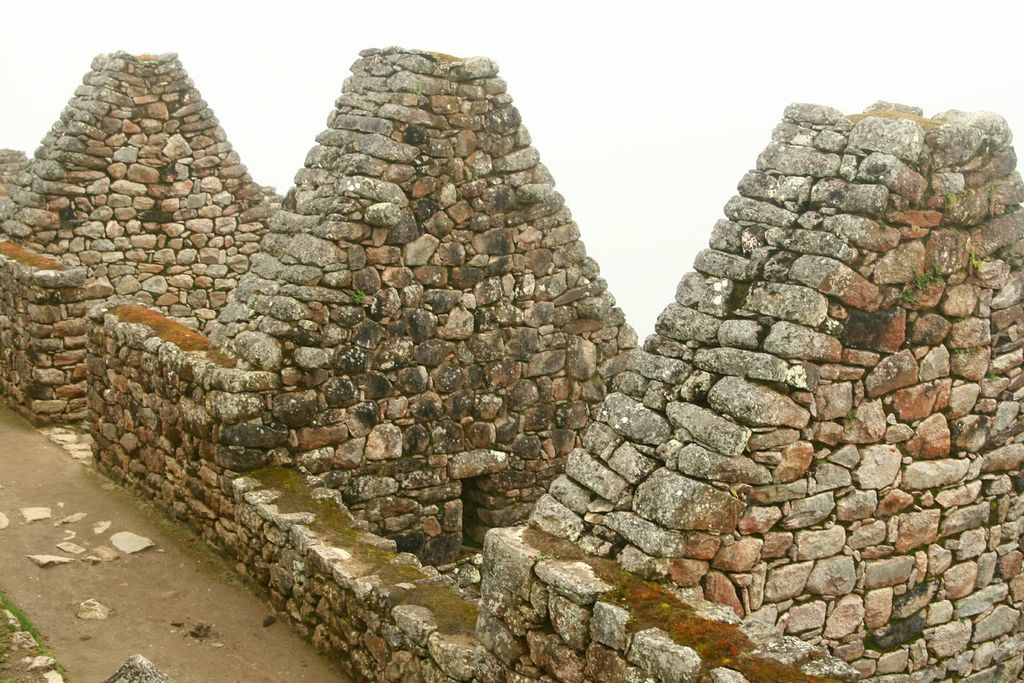
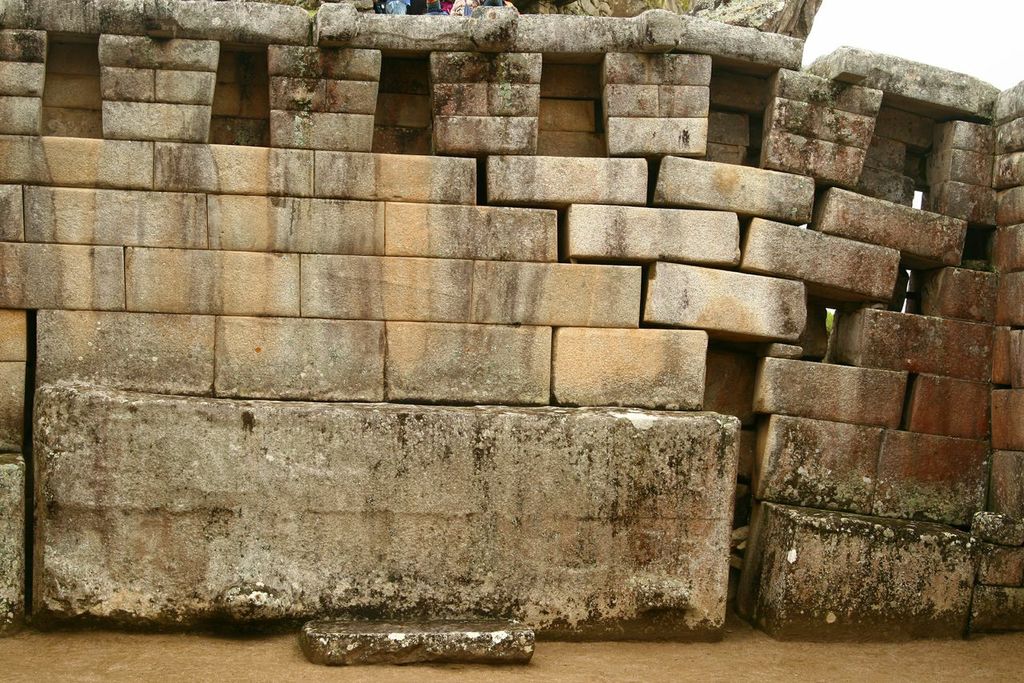

As we were climbing up and down the steps, we realized how horrible we looked compared to tourists who had arrived by bus. Although we looked young and fit, without our hiking poles, we could barely go up and down the stairs. Our knees simply hurt too much. We had to either go extremely slowly or hold on to the walls.
It finally got clear enough for us to take the "classic" Machu Picchu photos. Since there were so many other people, and because the clouds kept blowing in and out, it took awhile for us to get satisfactory photos. We did see some more alpacas just grazing the terraces.
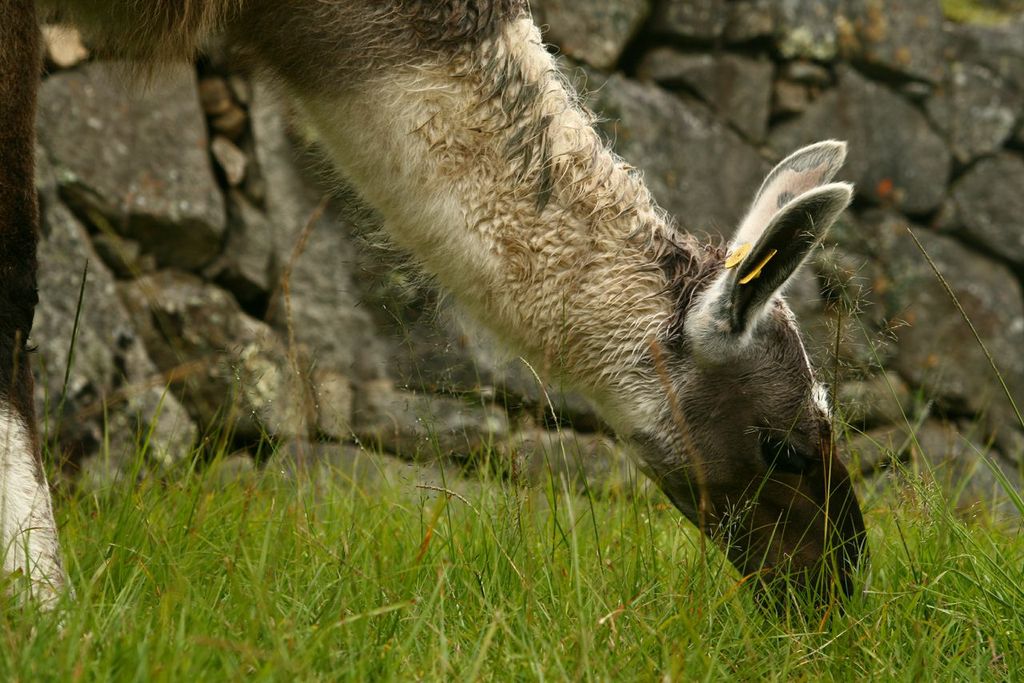
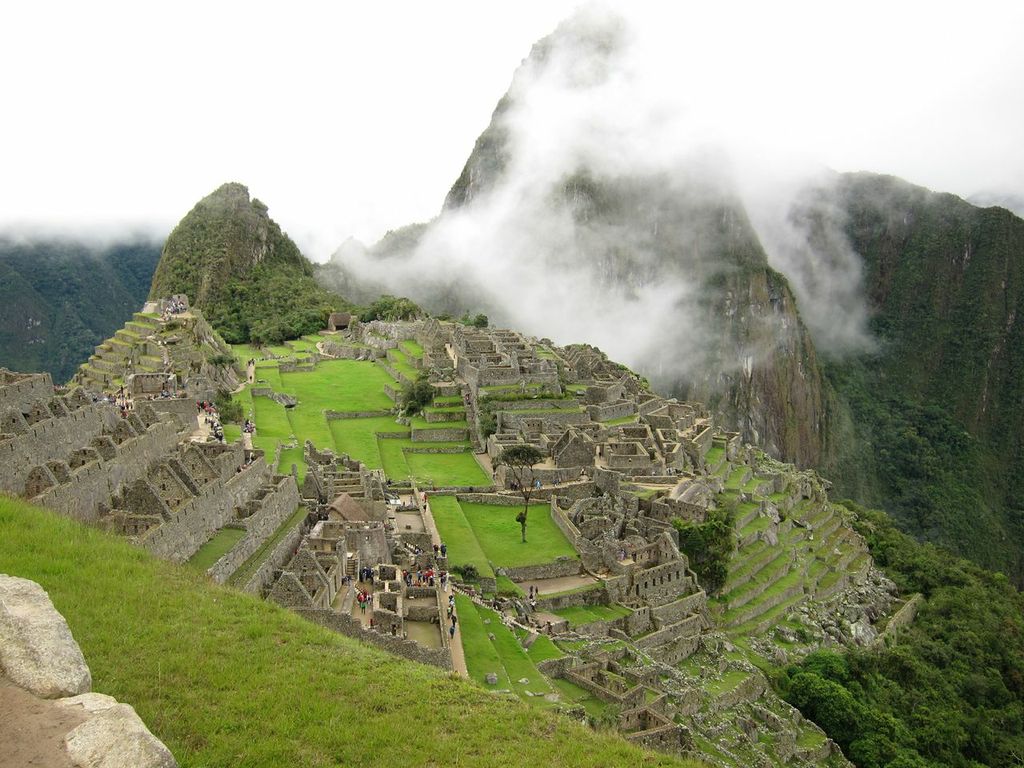
By the time we were ready to go, it was already 12:30 pm (we were supposed to meet the group at 1 pm at the restaurant, with the bus ride requiring 25 minutes), but we didn't really recognize the way out even though we had just been through a few hours earlier, albeit in the fog.
Before we left, we got a map and passport stamps.

From the map, we realized that there were still areas we had not had time to explore. Maybe we will return in the future? But by bus, not by another 4 day sweaty no shower trek!
